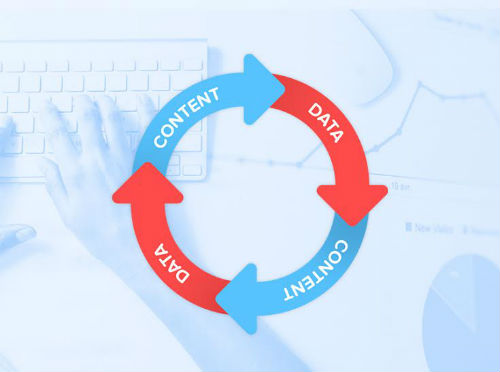
However, many of the published insights are based on the experiences from B2C companies that directly target household consumers. The challenge for B2B marketers is to create content that appeals to a company’s decision makers, which is more complex than targeting households.
How do you create a content marketing strategy that is meant to reach businesses rather than consumers? Is there really a divide between B2B and B2C content strategies or is the line blurring between the two? We’ve identified some of the challenges for B2B brands and offered suggestions to increase the authority, engagement, and relevance of content marketing.
What Does Your Audience Want?
Data science and progressive profiling help marketers answer that very question, especially if you work in the B2B industry. Analytics and insights tell you important details about the key decision makers in your target audience and what types of content resonate with those prospects.
In October 2013 McKinsey & Company, a global management consulting firm, published an infographic describing the themes B2B companies use to create new content and the influence those themes have on decision makers.
According to the graphic, many themes that B2B marketers consider critical for building their brand reputations have little to no statistical significance on how prospective buyers judge the strength of the brand. Prospects want to build relationships with brands that are accountable, encourage open dialogues with customers, and have high levels of expertise within specific fields.
Unfortunately, many B2B marketers devote resources towards content that highlights the features or benefits of their products or services. The infographic indicates that these topics usually fall on deaf ears.
Data science allows marketers to construct detailed profiles about their ideal prospects, which marketing teams can use to create content that will influence their target audience. By gathering analytical insights from your data, you can boost your reputation instead of wasting resources on material that doesn’t work.
Where Is The Disconnect In Messaging?
A new report compiled by Forrester Research says not much has changed over the past two years. When asked to express their opinion about the types of content provided by B2B marketers, 65% of respondents said the content was “useless.” Just as the McKinsey report revealed in 2013, prospects felt the content produced by B2B marketers was “not statistically significant” and failed to address their unique needs.
Where is the disconnect occurring? As was reported two years ago, marketers are struggling to create personalized content that connects with target audiences. Forrester’s research suggests that content is heavily focused on selling potential solutions to prospects without first addressing their unique needs or problems. If the content proposes a solution that fails to address a problem then the message fails to compute, the value is lost, and there is little to no chance for engagement or conversion.
How Do You Make Your Message Impactful?
In today’s landscape, marketing is more data-driven than ever. There is so much content floating around the web that you need to create something with real value for your prospects in order to stand out from the clutter.
Marketers are devoting more resources towards content marketing and are investing in data science software to calculate the value of existing content. Think about “quality” and “quantity” as you decide how to manage your content marketing resources. Analytics obtained from your data quantify how people respond to your existing content. Review those numbers; let the data tell you what content is having the most impact, and create more content that has the same qualitative impact.
[scribble src=”/post/193449074″ /]
Polls are a great way to collect data about the people that actually read your content. Ask a question at the bottom of your webpage that asks readers to tell you what they believed to be the most valuable piece of information.
The results obtained from the polls tell you which parts of your content resonate with the people who actually took the time to review your work. Use these responses to optimize your content strategy. Try to focus on the topics that your readers responded positively to in the polls. This is how you build a conversation with your audience and reduce the likelihood that your message fails to connect with your ideal customers.
The Takeaway
Messaging is critical for B2B content marketing. Audiences should view your content as a source of reliable information that is trustworthy, adds real value, and fulfills aneed. If you focus on achieving those pillars, you have a much better chance of getting your message out to the right people.
[scribble src=”/post/193449413″ /]







